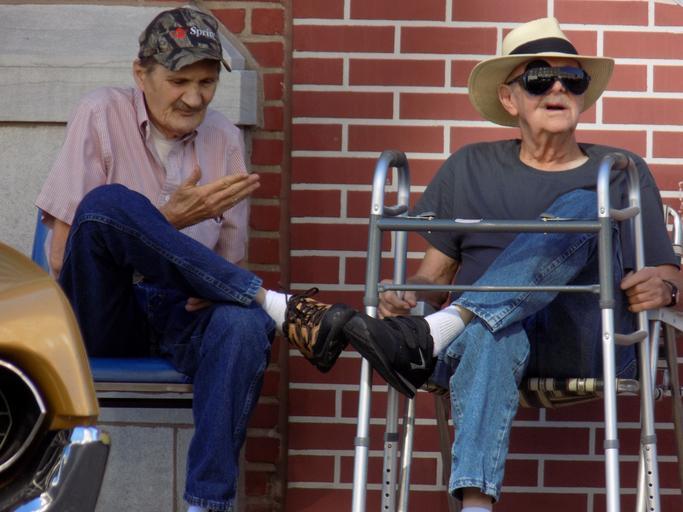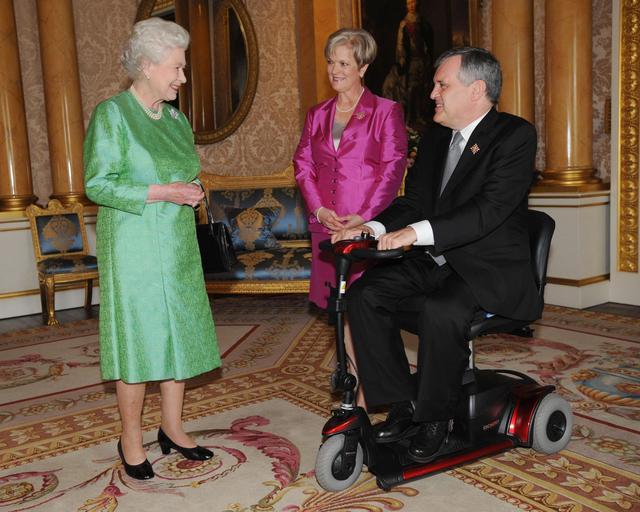
10 popular questions about how to help your neighbor:
- How can I help my elderly neighbor with groceries or other tasks?
- What are some ways to help a neighbor going through a tough time emotionally?
- How can I be a good neighbor during a natural disaster or emergency situation?
- What can I do to help a neighbor who is struggling financially?
- How can I help my neighbor who is dealing with a chronic illness?
- What are some ways to help a neighbor who has recently moved into the neighborhood?
- How can I be a supportive neighbor to someone who is new to the country or learning a new language?
- What can I do to help my neighbor who is grieving the loss of a loved one?
- How can I be a good neighbor to someone who has a disability?
- What are some ways to help a neighbor who is experiencing homelessness or housing insecurity?
How to Help Your Elderly Neighbor with Groceries or Other Tasks
As we age, we may face physical limitations that can make everyday tasks more challenging. This is especially true for elderly individuals who may have difficulty grocery shopping, running errands, or completing household chores. As a good neighbor, you can make a significant impact by helping your elderly neighbors with these tasks. Here are some ways to get started:
- Offer to do their grocery shopping: Many elderly individuals may have difficulty navigating the grocery store or carrying heavy bags. Consider offering to do their shopping for them or assisting them with their shopping trip. Be sure to ask for a detailed grocery list and any specific brands or items they prefer.
- Help with household chores: Many elderly individuals may struggle with household tasks such as cleaning, laundry, or yard work. Offer to help with these tasks, or hire a professional service to help out on their behalf.
- Run errands: Elderly individuals may have difficulty running errands such as picking up prescriptions or going to the post office. Offer to run these errands for them or provide transportation to these locations.
- Offer assistance with technology: Technology can be confusing for some elderly individuals, and they may need assistance with tasks such as setting up email or navigating social media. Offer to help them with these tasks or provide resources for technology education.
- Check-in regularly: Loneliness can be a significant issue for elderly individuals, and having someone to talk to can make a world of difference. Check-in on your elderly neighbors regularly, and make time for a friendly chat.
- Share your skills: If you have skills or knowledge that could be helpful to your elderly neighbor, such as home repair or cooking, offer to share them.
- Be patient and understanding: As we age, our physical and mental abilities may decline, and tasks that were once easy may become more challenging. Be patient and understanding with your elderly neighbor, and offer to help in any way you can.
Helping your elderly neighbor with everyday tasks can make a significant impact on their quality of life. By offering your time, skills, and support, you can make a difference and create a stronger sense of community.
How to Help a Neighbor Going Through a Tough Time Emotionally
We all go through difficult times in life, whether it’s the loss of a loved one, a job loss, or a major life transition. During these times, having support from friends and family can be incredibly important. If your neighbor is going through a tough time emotionally, there are ways that you can help them. Here are some suggestions:
- Offer a listening ear: Sometimes, all someone needs is someone to listen to them. Offer to sit down and talk with your neighbor, and be present with them as they share their thoughts and feelings.
- Provide practical support: Your neighbor may be struggling with daily tasks such as cooking, cleaning, or caring for their children. Offer to help out with these tasks, or provide resources for services that can assist them.
- Offer words of encouragement: Let your neighbor know that you believe in them and that they are not alone. Share inspirational quotes or stories of resilience to uplift their spirits.
- Help them connect with resources: Your neighbor may benefit from professional help such as therapy or counseling. Offer to help them find resources in your community, or connect them with support groups or other organizations.
- Show empathy and compassion: Recognize that your neighbor may be going through a difficult time and be patient with them. Show them kindness and empathy, and let them know that you care.
- Respect their boundaries: Your neighbor may not feel like talking or may not want to accept help. Respect their boundaries, and let them know that you are there for them if they need you.
- Keep in touch: Check in with your neighbor regularly, even after the initial crisis has passed. Let them know that you are still there for them and willing to help in any way you can.
Helping a neighbor going through a tough time emotionally can be a powerful way to show your support and care. By being present, offering practical support, and connecting them with resources, you can help your neighbor get through a difficult time and feel more connected to their community.

How to Be a Good Neighbor During a Natural Disaster or Emergency Situation
Natural disasters such as hurricanes, floods, and wildfires can be devastating for communities. During these times, it’s important to come together as neighbors and support each other. Here are some ways to be a good neighbor during a natural disaster or emergency situation:
- Check on your neighbors: After a natural disaster, check on your neighbors to ensure that they are safe and have access to food, water, and other essentials. Offer to help them with tasks such as cleaning up debris or repairing damage.
- Offer shelter: If your home is safe and undamaged, offer shelter to your neighbors who may have lost their homes or are unable to return to their homes due to damage.
- Share resources: If you have extra food, water, or other resources, share them with your neighbors who may be in need.
- Help with communication: After a natural disaster, communication can be challenging. Offer to help your neighbors stay in touch with loved ones or emergency services if they are having difficulty.
- Volunteer: Consider volunteering with organizations that are providing relief and recovery efforts in your community. You can make a difference by helping with tasks such as distribution of supplies or providing emotional support.
- Be prepared: Make sure that you are prepared for a natural disaster or emergency situation by having an emergency kit, knowing evacuation routes, and staying informed about potential hazards in your area.
- Follow safety protocols: During a natural disaster or emergency situation, it’s important to follow safety protocols such as staying indoors or evacuating when instructed to do so. By following these protocols, you can ensure your safety and the safety of your neighbors. Being a good neighbor during a natural disaster or emergency situation can help your community come together and support each other during a challenging time. By checking on your neighbors, offering shelter and resources, helping with communication, volunteering, being prepared, and following safety protocols, you can make a positive impact and help your community recover more quickly from a natural disaster.
- Be respectful and patient: After a natural disaster, emotions can run high, and people may be stressed or anxious. Be respectful and patient with your neighbors, and try to be understanding of their situation.
- Respect boundaries: Some neighbors may not want or need assistance, and it’s important to respect their boundaries. Offer your help, but don’t push it if they decline.
- Be aware of scams: Unfortunately, natural disasters can attract scammers looking to take advantage of vulnerable people. Be aware of scams and report any suspicious activity to the authorities.
- Be a source of hope: Natural disasters can be overwhelming, but by being a source of hope and positivity, you can help uplift your neighbors’ spirits. Share stories of resilience and hope, and encourage your neighbors to stay strong and focused on recovery.
In summary, being a good neighbor during a natural disaster or emergency situation involves checking on your neighbors, offering shelter and resources, helping with communication, volunteering, being prepared, following safety protocols, being respectful and patient, respecting boundaries, being aware of scams, and being a source of hope. By coming together and supporting each other, we can recover more quickly and build a stronger, more resilient community.
How to Help and Support an Elderly Neighbor
As our population ages, more and more people have elderly neighbors who may need assistance or support. Here are some ways to help and support an elderly neighbor:
- Check in regularly: Elderly neighbors may be more isolated or have limited mobility, so it’s important to check in on them regularly. You can call or visit them, or send them a card or letter.
- Offer to help with tasks: Elderly neighbors may have difficulty with tasks such as grocery shopping, cleaning, or yard work. Offer to help with these tasks, or connect them with resources that can provide assistance.
- Help with technology: Technology can be challenging for elderly people, but it can also be a lifeline for staying connected with loved ones or accessing resources. Offer to help your elderly neighbor with tasks such as setting up email, video calling, or ordering groceries online.
- Provide transportation: Elderly neighbors may have limited mobility or be unable to drive. Offer to provide transportation to medical appointments, grocery stores, or other necessary destinations.
- Share meals: Cooking for one person can be challenging, and elderly neighbors may appreciate sharing a meal with someone else. Offer to cook a meal for your neighbor or invite them over for a shared meal.
- Offer companionship: Elderly neighbors may feel lonely or isolated, and a friendly visit or phone call can make a big difference. Offer to spend time with your neighbor, play games or cards, or watch a movie together.
- Be aware of health concerns: Elderly neighbors may have health concerns or be on medication, so it’s important to be aware of their needs and any potential risks. Offer to help them keep track of their medication schedule or connect them with healthcare resources if necessary.
- Help with emergency planning: Elderly neighbors may need assistance with emergency planning, such as creating an emergency kit or identifying evacuation routes. Offer to help them create a plan or connect them with resources that can provide assistance.
- Respect their independence: While elderly neighbors may need assistance or support, it’s important to respect their independence and allow them to make their own decisions whenever possible. Offer assistance, but don’t push it if they decline.
- Connect with community resources: There are often community resources available to support elderly neighbors, such as senior centers, meal delivery programs, or transportation services. Connect your neighbor with these resources, or offer to help them navigate the options.
- Be a friend: Above all, being a good neighbor to an elderly person means being a friend. Offer emotional support, listen to their stories, and make them feel valued and cared for.
In summary, helping and supporting an elderly neighbor involves checking in regularly, offering to help with tasks, helping with technology, providing transportation, sharing meals, offering companionship, being aware of health concerns, helping with emergency planning, respecting their independence, connecting with community resources, and being a friend. By providing assistance and emotional support, we can help our elderly neighbors live independently and feel connected to their community.
How to Help and Support a Single Parent Neighbor
Single parents face unique challenges in raising children, and may need extra support from their neighbors. Here are some ways to help and support a single parent neighbor:
- Offer to babysit: Single parents may have difficulty finding affordable or reliable childcare. Offer to babysit their children, or connect them with trusted resources for childcare.
- Help with errands: Single parents may struggle to find time for errands such as grocery shopping or picking up prescriptions. Offer to help with these tasks, or connect them with resources that can provide assistance.
- Share meals: Cooking for one person or a small family can be challenging, and single parents may appreciate sharing a meal with someone else. Offer to cook a meal for your neighbor or invite them over for a shared meal.
- Help with transportation: Single parents may have difficulty getting their children to school or extracurricular activities. Offer to provide transportation, or connect them with resources that can provide assistance.
- Offer emotional support: Single parenting can be stressful and isolating, and a friendly conversation or listening ear can make a big difference. Offer emotional support, and let your neighbor know that you are there to help.
- Help with household tasks: Single parents may have difficulty keeping up with household tasks such as cleaning or yard work. Offer to help with these tasks, or connect them with resources that can provide assistance.
- Provide practical support: Single parents may need help with practical tasks such as assembling furniture or fixing a leaky faucet. Offer to help with these tasks, or connect them with resources that can provide assistance.
- Offer to share resources: Single parents may have limited financial resources, and may appreciate sharing resources such as tools or gardening equipment. Offer to share your resources, or connect them with resources that can provide assistance.
- Help with budgeting: Single parents may need help with budgeting and financial planning. Offer to help them create a budget or connect them with resources that can provide assistance.
- Connect with community resources: There are often community resources available to support single parents, such as parenting groups or financial assistance programs. Connect your neighbor with these resources, or offer to help them navigate the options.
- Be a friend: Above all, being a good neighbor to a single parent means being a friend. Offer emotional support, listen to their stories, and make them feel valued and cared for.
In summary, helping and supporting a single parent neighbor involves offering to babysit, helping with errands, sharing meals, helping with transportation, offering emotional support, helping with household tasks, providing practical support, offering to share resources, helping with budgeting, connecting with community resources, and being a friend. By providing practical and emotional support, we can help our single parent neighbors raise their children and feel connected to their community.

How to Help and Support a Pet Owner Neighbor
Pet owners love their furry friends, but may need some extra help and support from their neighbors. Here are some ways to help and support a pet owner neighbor:
- Offer to pet sit: Pet owners may need to travel or work long hours, and may appreciate someone to care for their pet while they are away. Offer to pet sit, or connect them with trusted resources for pet care.
- Help with pet care: Pet owners may need help with tasks such as walking their dog or cleaning litter boxes. Offer to help with these tasks, or connect them with resources that can provide assistance.
- Share pet-friendly resources: Pet owners may appreciate recommendations for pet-friendly parks, grooming services, or pet stores. Share your knowledge and connect them with resources that can provide assistance.
- Provide pet-related support: Pet owners may need help with tasks such as administering medication or trimming nails. Offer to help with these tasks, or connect them with resources that can provide assistance.
- Offer emotional support: Losing a pet can be devastating, and pet owners may appreciate a friendly conversation or listening ear. Offer emotional support, and let your neighbor know that you are there to help.
- Help with household tasks: Pet owners may need help with household tasks such as cleaning pet hair or repairing furniture damaged by their pets. Offer to help with these tasks, or connect them with resources that can provide assistance.
- Provide practical support: Pet owners may need help with practical tasks such as carrying heavy bags of pet food or assembling a crate. Offer to help with these tasks, or connect them with resources that can provide assistance.
- Offer to share resources: Pet owners may appreciate sharing resources such as pet toys or grooming tools. Offer to share your resources, or connect them with resources that can provide assistance.
- Connect with community resources: There are often community resources available to support pet owners, such as pet rescue organizations or low-cost vaccination clinics. Connect your neighbor with these resources, or offer to help them navigate the options.
- Be a friend: Above all, being a good neighbor to a pet owner means being a friend. Offer emotional support, listen to their stories about their furry friend, and make them feel valued and cared for.
In summary, helping and supporting a pet owner neighbor involves offering to pet sit, helping with pet care, sharing pet-friendly resources, providing pet-related support, offering emotional support, helping with household tasks, providing practical support, offering to share resources, connecting with community resources, and being a friend. By providing practical and emotional support, we can help our pet owner neighbors care for their furry friends and feel connected to their community.
How to Help and Support a New Parent Neighbor
New parents face a host of challenges in adjusting to life with a new baby, and may need extra support from their neighbors. Here are some ways to help and support a new parent neighbor:
- Offer to babysit: New parents may appreciate a break to run errands, get some rest, or spend time together. Offer to babysit their baby, or connect them with trusted resources for childcare.
- Help with errands: New parents may have difficulty finding time to run errands such as grocery shopping or picking up prescriptions. Offer to help with these tasks, or connect them with resources that can provide assistance.
- Bring over meals: New parents may struggle to find time and energy to cook, and may appreciate home-cooked meals delivered to their doorstep. Offer to bring over meals or organize a meal train with other neighbors.
- Provide emotional support: New parents may experience a range of emotions as they adjust to life with a new baby. Offer emotional support, listen to their concerns, and let them know that they are not alone.
- Offer to help with household tasks: New parents may have difficulty keeping up with household tasks such as laundry, cleaning, or organizing. Offer to help with these tasks, or connect them with resources that can provide assistance.
- Share parenting resources: New parents may appreciate recommendations for parenting books, classes, or support groups. Share your knowledge and connect them with resources that can provide assistance.
- Help with pet care: New parents may struggle to care for their pets while adjusting to life with a new baby. Offer to help with pet care tasks, or connect them with resources that can provide assistance.
- Connect with community resources: There are often community resources available to support new parents, such as parenting classes or postpartum support groups. Connect your neighbor with these resources, or offer to help them navigate the options.
- Be a good listener: New parents may need someone to talk to about their experiences and concerns. Be a good listener, and offer support and encouragement.
- Offer to help with childcare logistics: New parents may have difficulty coordinating childcare schedules, especially if they have other children. Offer to help with logistics such as picking up kids from school or daycare, or connect them with resources that can provide assistance.
In summary, helping and supporting a new parent neighbor involves offering to babysit, helping with errands, bringing over meals, providing emotional support, offering to help with household tasks, sharing parenting resources, helping with pet care, connecting with community resources, being a good listener, and offering to help with childcare logistics. By providing practical and emotional support, we can help our new parent neighbors adjust to life with a new baby and feel connected to their community.
How to Help and Support an Elderly Neighbor
Elderly neighbors may need extra help and support in maintaining their independence and quality of life. Here are some ways to help and support an elderly neighbor:
- Offer to help with household tasks: Elderly neighbors may struggle with household tasks such as cleaning, laundry, or grocery shopping. Offer to help with these tasks, or connect them with resources that can provide assistance.
- Provide transportation: Elderly neighbors may have difficulty driving or getting to appointments. Offer to provide transportation, or connect them with resources such as ride-sharing services or senior transportation programs.
- Check in regularly: Elderly neighbors may appreciate regular check-ins to see how they are doing and if they need anything. Make a phone call, send a text message, or stop by for a visit.
- Offer emotional support: Elderly neighbors may feel isolated or lonely. Offer emotional support, listen to their stories and concerns, and let them know that they are valued and cared for.
- Share your time: Elderly neighbors may appreciate spending time with someone. Offer to read a book, play a game, or watch a movie with them.
- Help with technology: Elderly neighbors may have difficulty with technology such as smartphones or computers. Offer to help with these tasks, or connect them with resources that can provide assistance.
- Offer to walk with them: Elderly neighbors may appreciate a walking companion for exercise or socialization. Offer to take a walk with them or connect them with a walking group or senior center that offers these activities.
- Help with home safety: Elderly neighbors may need help with home safety, such as installing grab bars or improving lighting. Offer to help with these tasks or connect them with resources that can provide assistance.
- Assist with medication management: Elderly neighbors may have difficulty managing their medications. Offer to help with organizing or reminding them to take their medications, or connect them with resources that can provide assistance.
- Connect with community resources: There are often community resources available to support elderly neighbors, such as senior centers or Meals on Wheels programs. Connect your neighbor with these resources or offer to help them navigate the options.
In summary, helping and supporting an elderly neighbor involves offering to help with household tasks, providing transportation, checking in regularly, offering emotional support, sharing your time, helping with technology, offering to walk with them, helping with home safety, assisting with medication management, and connecting with community resources. By providing practical and emotional support, we can help our elderly neighbors maintain their independence and feel connected to their community.
In conclusion, helping and supporting our neighbors can make a significant difference in their lives and strengthen our communities. By offering our time, skills, and resources, we can help those around us and create a culture of kindness and support. Whether our neighbors are new parents or elderly, we can find ways to make a positive impact and build stronger connections with those around us.

How to Connect with Community Resources to Help Your Neighbor.
As we discussed earlier, there are many resources available in the community to support elderly neighbors, including senior centers, Meals on Wheels programs, and transportation services. However, many people may not be aware of these resources or may not know how to access them.
Here are some steps you can take to connect with community resources and help your neighbor:
- Research community resources: Start by researching community resources that may be available to support your neighbor. You can do this by searching online or by contacting local organizations, such as senior centers, churches, or community centers.
- Talk to your neighbor: Once you have identified potential resources, talk to your neighbor to see if they would be interested in utilizing these services. Explain the benefits and how they can access the resources.
- Offer to help with registration: If your neighbor is interested in using a community resource, offer to help them with the registration process. This may involve filling out paperwork, making phone calls, or scheduling appointments.
- Provide transportation: Some community resources, such as senior centers or Meals on Wheels programs, may require transportation. Offer to provide transportation to your neighbor or connect them with transportation services in the community.
- Follow up: After your neighbor has accessed a community resource, follow up with them to see how it went. Ask if they need any further assistance or if there are any other resources they may be interested in exploring.
Connecting with community resources can be a great way to support your neighbor and help them maintain their independence. By taking the time to research available resources and offer assistance with registration and transportation, you can make a real difference in their lives.
Here are some examples of community resources that may be available to support elderly neighbors:
- Senior centers: Many communities have senior centers that offer a variety of programs and services, such as exercise classes, educational workshops, and social activities. These centers can be a great way for seniors to stay active and engaged in the community.
- Meals on Wheels: Meals on Wheels is a program that provides home-delivered meals to seniors who are unable to prepare their own food. This can be a great option for elderly neighbors who may have difficulty cooking for themselves.
- Transportation services: Many communities offer transportation services for seniors, such as shuttle buses or volunteer drivers. These services can be used to access medical appointments, grocery stores, or other community resources.
- Home care services: Home care services can provide assistance with daily living activities, such as bathing, dressing, and meal preparation. This can be a great option for elderly neighbors who may need additional support at home.
- Volunteer programs: Many communities have volunteer programs that match volunteers with seniors who need assistance. This can be a great way to provide social support and help with tasks like grocery shopping or yard work.
By connecting with community resources, we can help our neighbors stay connected, engaged, and independent. By offering our time and support, we can make a real difference in the lives of those around us and build stronger communities in the process.
How to Create a Neighborhood Support Group to Help Your Neighbors.
Creating a neighborhood support group is a great way to help your neighbors and build a stronger sense of community. A support group can provide social support, help with tasks like grocery shopping or yard work, and offer a sense of belonging and connection. Here are some steps to help you create a neighborhood support group:
- Identify potential members: Start by identifying potential members for your support group. This can include neighbors, friends, or family members who live in the area. Consider reaching out to those who are elderly, disabled, or living alone.
- Assess needs: Once you have identified potential members, assess their needs to determine what type of support they require. This can include tasks like grocery shopping, meal preparation, or transportation.
- Develop a plan: Based on the needs assessment, develop a plan for your support group. Determine how often you will meet, what types of activities or services you will provide, and how you will organize and coordinate the group.
- Recruit volunteers: In order to make the support group successful, you will need to recruit volunteers to help with tasks like grocery shopping, meal preparation, and transportation. Consider reaching out to local organizations, such as churches or community centers, to help recruit volunteers.
- Communicate regularly: Communication is key to the success of a support group. Make sure to communicate regularly with members to keep them updated on activities and events. Use a variety of communication channels, such as phone calls, email, or social media.
- Plan group activities: In addition to providing support, a neighborhood support group can also provide social activities and events. Plan activities like potluck dinners, game nights, or community clean-up days to help build a sense of community and connection among group members.
Creating a neighborhood support group can be a great way to help your neighbors and build a stronger community. By working together to provide support and social activities, you can make a real difference in the lives of those around you. Here are some benefits of creating a neighborhood support group:
- Increased social support: A support group can provide social support and help to combat loneliness and social isolation, which are common problems among elderly and disabled individuals.
- Improved quality of life: By providing assistance with tasks like grocery shopping and meal preparation, a support group can help to improve the quality of life for members.
- Greater sense of community: By working together to support one another, a neighborhood support group can help to build a stronger sense of community and connection among members.
- Enhanced sense of purpose: For volunteers, participating in a support group can provide a sense of purpose and fulfillment by helping others and making a positive impact in the community.
Creating a neighborhood support group can be a rewarding and fulfilling experience for all involved. By taking the time to identify potential members, assess needs, and develop a plan, you can create a supportive and inclusive environment for your neighbors. With regular communication and a variety of activities and events, you can build a strong and connected community that supports and uplifts one another.




